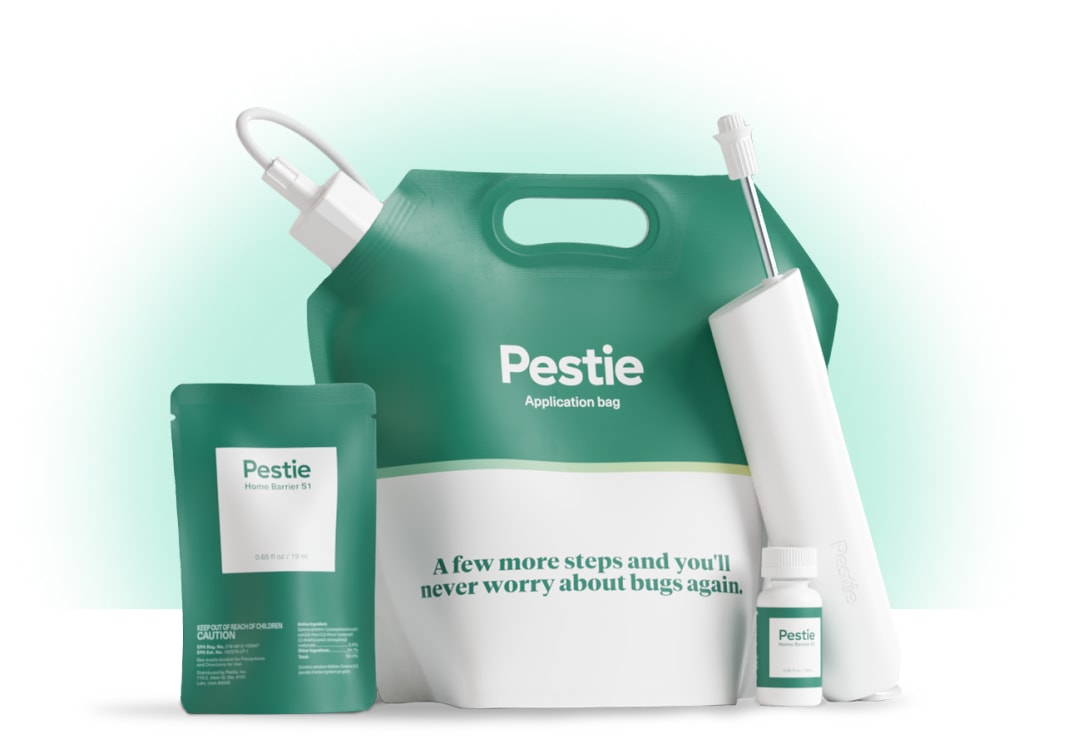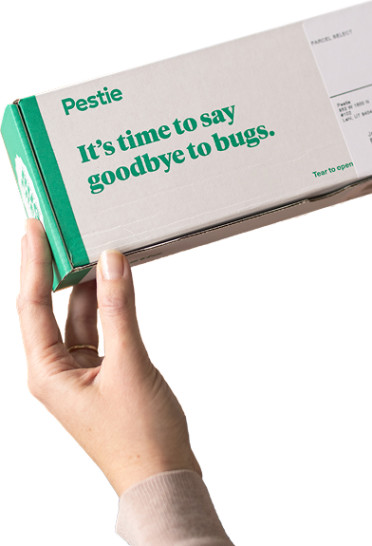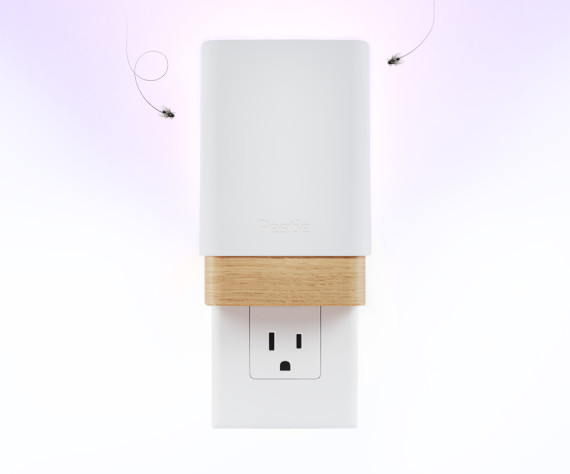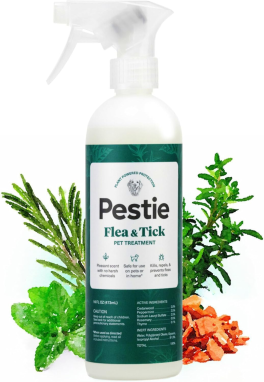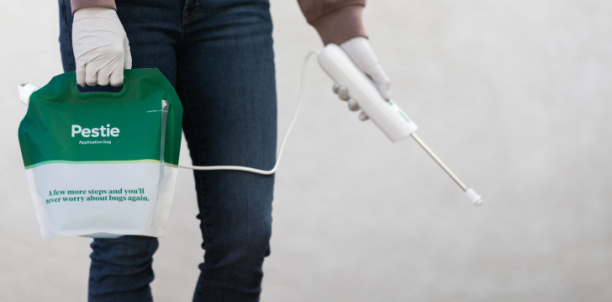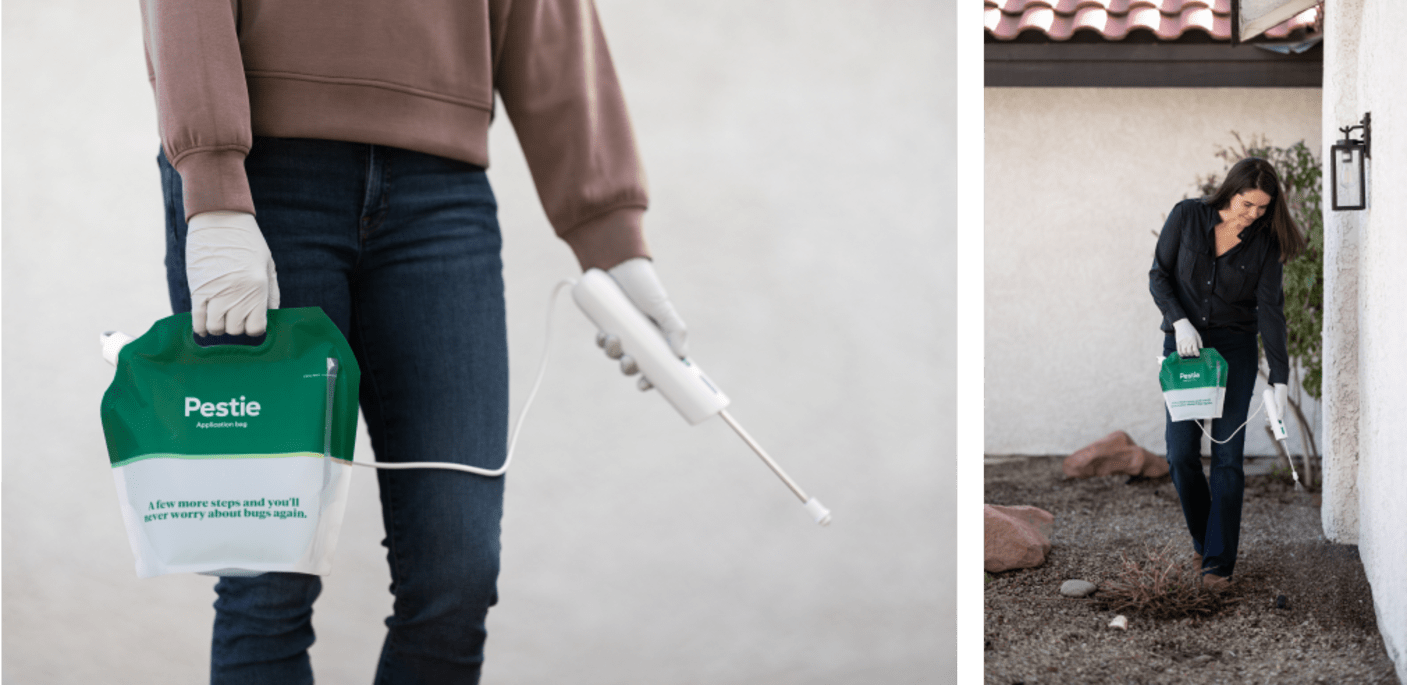How to identify and get rid of sawflies
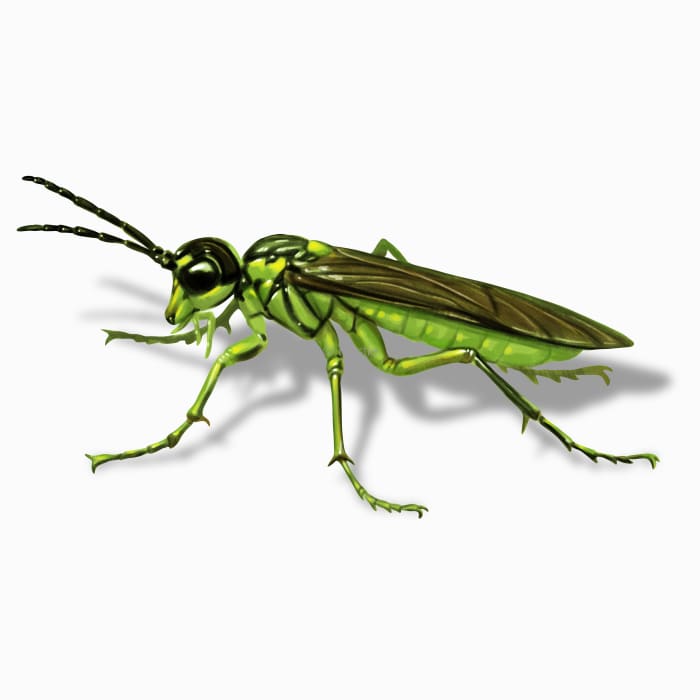
Caterpillars, slugs, flies? Nope, it's a sawfly!
Sometimes, nature confuses us about what we are actually looking at. Then, when we humans finally figure things out, we make things even more confusing with our names!
That's the story of sawflies. These caterpillar-like insects go munching on plants, but they aren't caterpillars. As adults, they look like flies, yet they are wasps. Non-stinging wasps, that is. And with all that confusion, someone decided to call them slugs.
Sawflies are related to bees, wasps, and ants, but they lack the thin waist that wasps and ants have. Their name comes from their saw-like ovipositor, the organ that lays eggs. The female uses it to cut into the plant and lay her eggs into leaves, needles, or new plant growth.
Sawflies are only a problem in outdoor plants, as the larvae congregate together and chew on leaves until they strip your favorite plants bare. However, with some keen observation and a few garden-friendly tactics, you can save your greenery from these leaf-loving pests without reaching for harsh chemicals.
How to identify sawflies
Sawflies are unique insects in both their larval and adult forms. As larvae, they often appear like caterpillars or slugs. They have a smooth body with little to no hair, and unlike caterpillars, they have two single eyes instead of a cluster of ocelli. Additionally, caterpillars will have 2-5 pairs of prolegs, whereas sawfly larvae will have six or more prolegs. These prolegs aren't true legs but fleshy appendages that help the larvae walk. The sawfly prolegs also won't have hooks on them.
Adult sawflies will look somewhat wasp-like but won't have a thin waist. Instead, it will have a broad waist and lacks a stinger.
Signs of infestation include visible larvae on plants, skeletonized leaves, and, in severe cases, complete defoliation. Sawflies enjoy munching on leaves, leaving behind a trail of destruction on affected plants similar to leaf miners.
How big are sawflies?
Sawflies can vary in size but generally range from 1/4 to 1 inch in length.
What other pests look like a sawfly?
Sawfly larvae can be mistaken for caterpillars or sometimes slugs. The damage can be similar, too. Adult sawflies can be mistaken for either wasps or certain flies.
Where do sawflies live?
Sawflies are found across the United States. Some species will only be found on their preferred host plant.
How to get rid of sawflies
If you're looking for some ways to get rid of sawflies, then here are a few options:
- Remove larvae by hand where possible.
- Encourage natural predators like birds and beneficial insects.
- Maintain plant health to help them resist and recover from damage.
- Use water sprays to dislodge larvae from plants.
You can also spray an insect barrier around your property for year-round protection. Pestie offers a pro-grade solution that comes to your door when you need it most. Check out our DIY plan so you can save hundreds on pest control this year.
Treat sawflies with Pestie
If you're still having trouble keeping sawflies away, the best option is to use a pro-grade, effective pest control solution like Pestie.
Pestie is a do-it-yourself pest control solution that's specially designed to keep sawflies and other pests away from your home.
With Pestie, you can rest easy knowing that your living space is protected and free of creepy crawlies. And the best part? It's designed for people, pets, and the planet, so you can say goodbye to harsh chemicals and hello to peace of mind!
- Save hundreds compared to traditional annual pest plans
- People, pet, and planet-friendly
- Pro-grade customized formulas
Quick facts
- Scientific name
Family - Symphyta
- Colors
Adults – black, yellow, red. Larvae – green, yellow, black
- Life span
A few weeks to months
- Diet
Larvae feed on the foliage of plants, including deciduous trees, shrubs, and grasses.
How dangerous are Sawflies?
Low danger risk
Sawflies pose no direct harm to humans but can cause significant damage to plants and crops.
Sawfly larvae can be susceptible to parasitic wasps. These wasps lay their eggs inside the larvae, hatch, and then eat the larva's insides while still alive!
